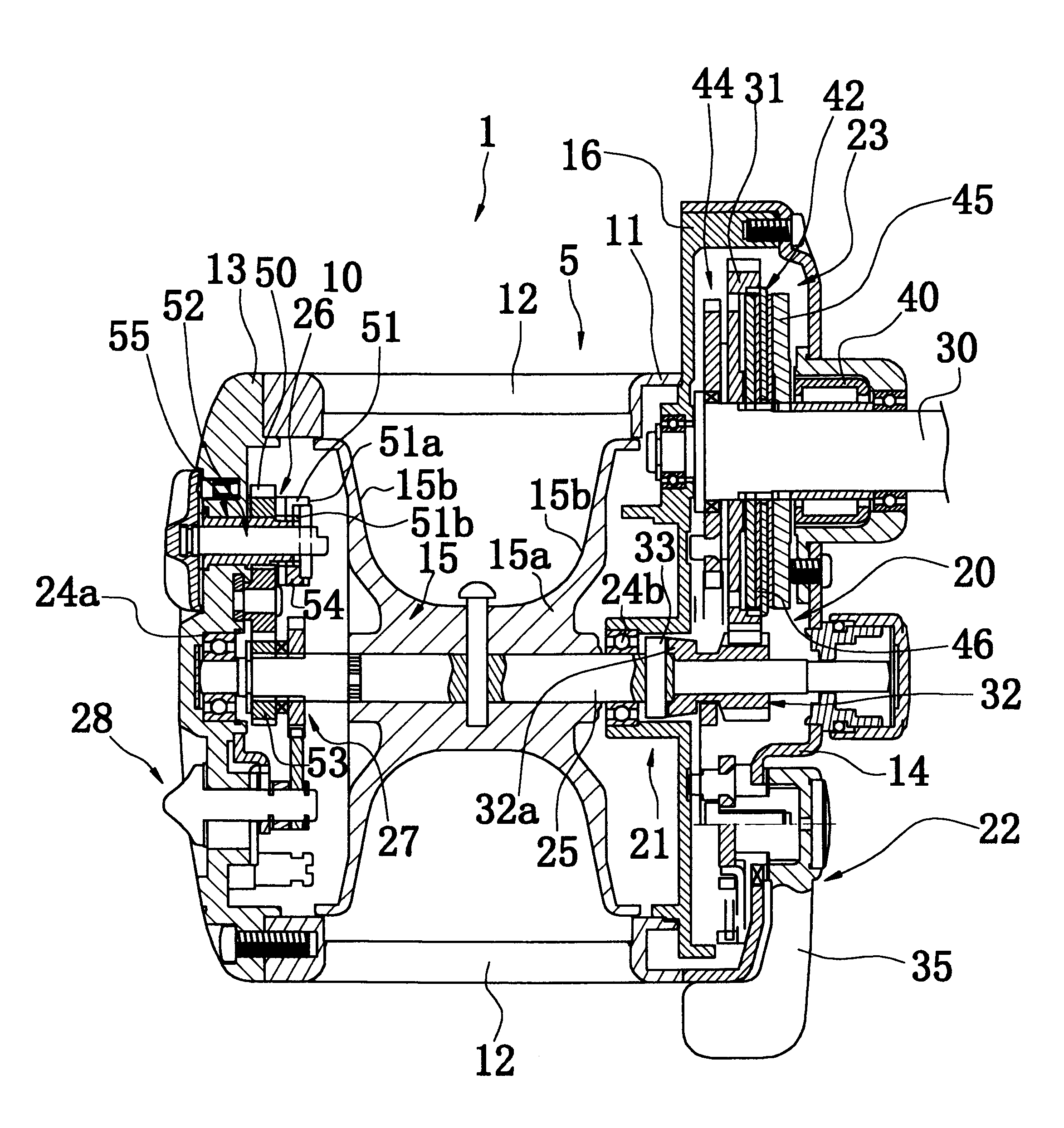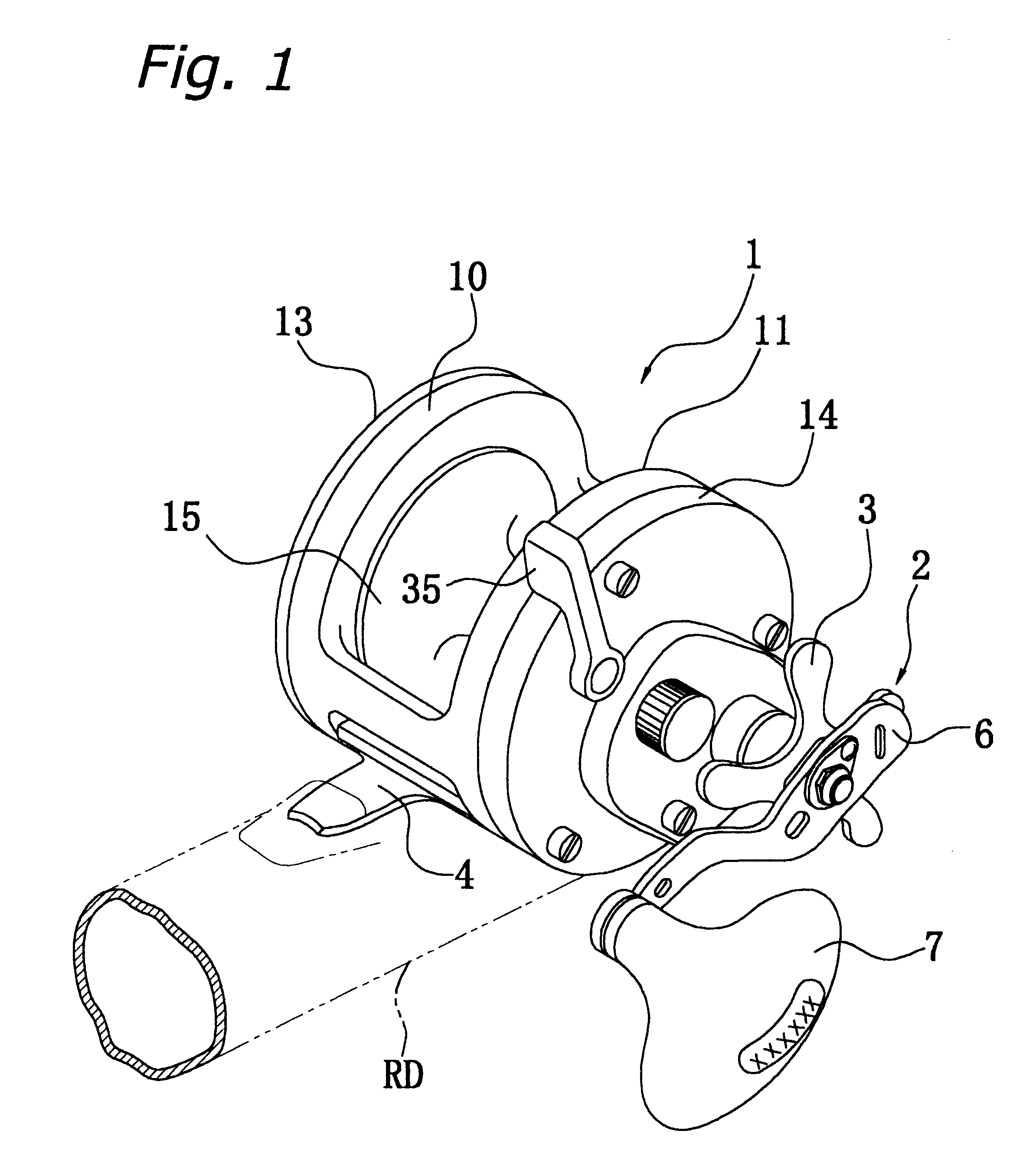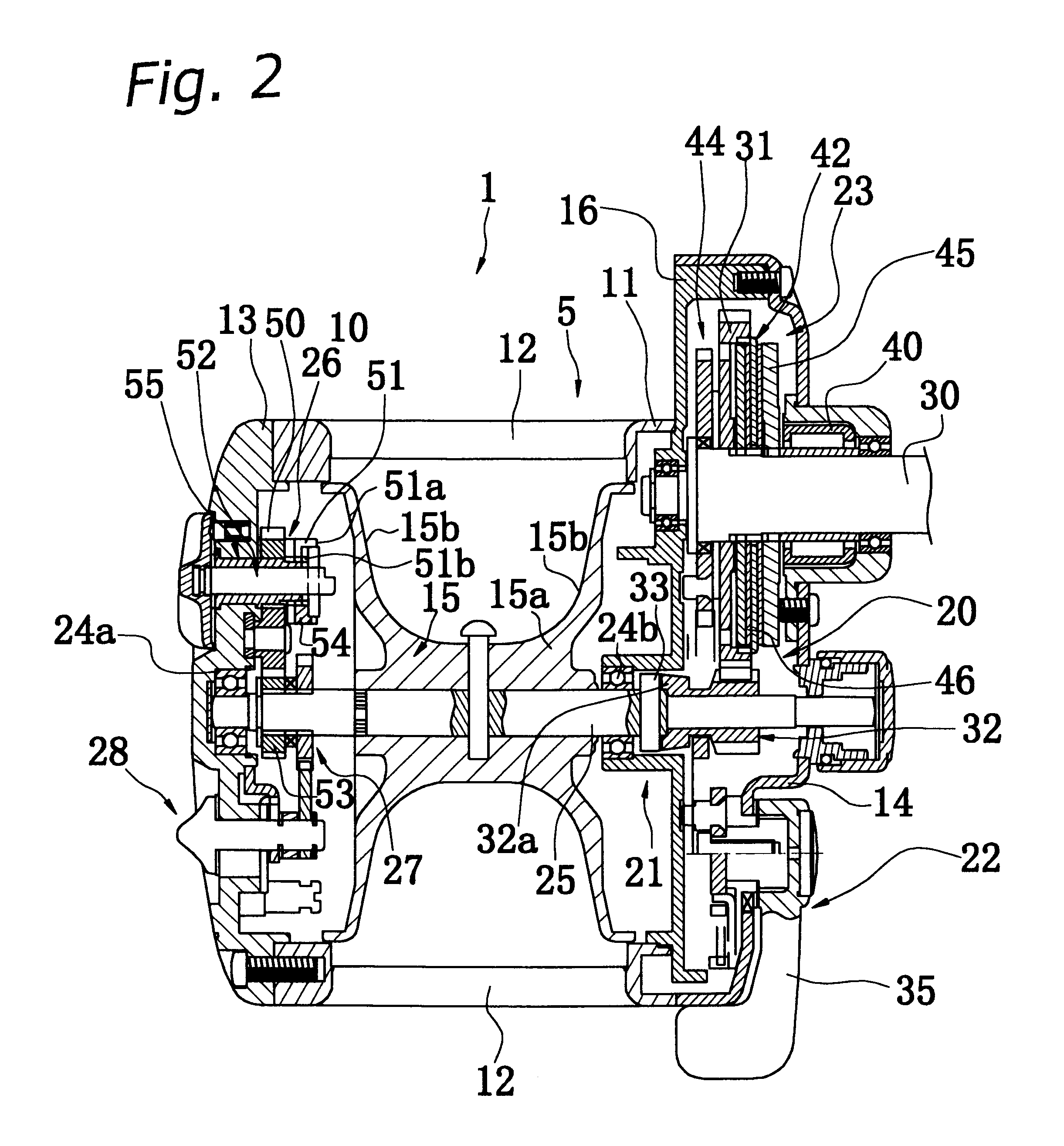Herein, since the first braking mechanism and the sounding mechanism may be switched at the same time using the switching operation mechanism, reel switching operations necessary for fishing are simplified, as compared with reels in which the first braking mechanism and the sounding mechanism are operated separately.
A double bearing reel in a still further aspect is the foregoing double bearing reel, further including a second braking mechanism which applies a braking force to the spool to prevent the spool from rotating in the line releasing direction when the clutch mechanism is in the coupled state. Herein, by setting the braking force applied by the second braking mechanism weaker than that of the first braking force, the live bait may freely swim in the water while applying the weaker force to the spool using the second braking mechanism. Then, when a fish is caught, the clutch mechanism may be turned so that a larger braking force is applied to the spool by the second braking mechanism to help land the fish. Accordingly, using the two braking mechanisms having the different levels of braking force enables drifting live bait and landing fish without switching the braking force.
A double bearing reel in a further aspect is the foregoing double bearing reel, wherein the braking adjustment mechanism includes an adjustment member rotatably fitted to the reel body, and a
cam mechanism for contacting the pressing member. The
cam mechanism rotates cooperatively with, and reciprocates along the
rotational axis of, the adjustment member. The pressing member is disposed between the
cam mechanism and the first rotation member. The reciprocating movement of the cam mechanism varies compressing force applied to the first rotation member by the pressing member. Herein, since the braking force is adjusted by the cam mechanism pressing on the pressing member in the
rotational axis direction, the pressing force is restricted in comparison with a configuration in which the pressing member is compressed by screws. The braking adjustment mechanism is therefore less subject to damage.
A double bearing reel in a still further aspect is the foregoing double bearing reel, wherein the sounding mechanism includes a disk-shaped jagged member having circumferentially spaced outer
peripheral projections formed side by side. The jagged member rotates cooperatively with the spool. The sounding mechanism also includes a sounding member, disposed such that one is movable into a sounding position between the
peripheral projections of the jagged member and into a separated position wherein the end is parted away from the
peripheral projections. In the sounding position, rotation of the jagged member vibrates the sounding member. The switching operation mechanism moves the sounding member between the sounding position and the separated position. Herein, when the sounding member is put into the sounding position by the switching operation mechanism, the first braking mechanism is switched to the braking state. When the spool rotates in this state, the end of the sounding member vibrates by repeatedly colliding with the peripheral projections on the jagged member rotating cooperatively with the spool, producing a clicking sound. At the same time, the spool is braked. Further, when put into the separated position, the first braking mechanism is switched to the non-braking state and no sound is produced when the spool rotates, reducing rotational resistance on the spool. The sounding state and sound-disabled state are effected by the sounding member contacting / parting on / off the peripheral projections on the jagged member. Thus a simple mechanism reliably realizes the two states.
A double bearing reel in still another aspect is the foregoing double bearing reel, wherein the sounding member is moveable radially with respect to the jagged member, and the handling member is provided on the reel body to be movable in the said radial direction. The handling member moves the sounding member from the sounding position to the separated position, the latter being shifted in the said radial direction from the former. Herein, making the sounding member movable using the handling member in the radial direction with respect to the jagged member simplifies the structure of the handling member.
The double bearing reel in one further aspect of the present invention is the foregoing double bearing reel, further including a regulating means for regulating rotational position of the converter member in the coupled position. Herein, regulating the
coupling member from over-travel in the coupled position keeps rotational resistance generated when the fishing line is released from being large. Further, the rotational resistance not being large is thus not heavy on the operation of moving the handling member in shifting it into the parted away position.
 Login to View More
Login to View More  Login to View More
Login to View More 


